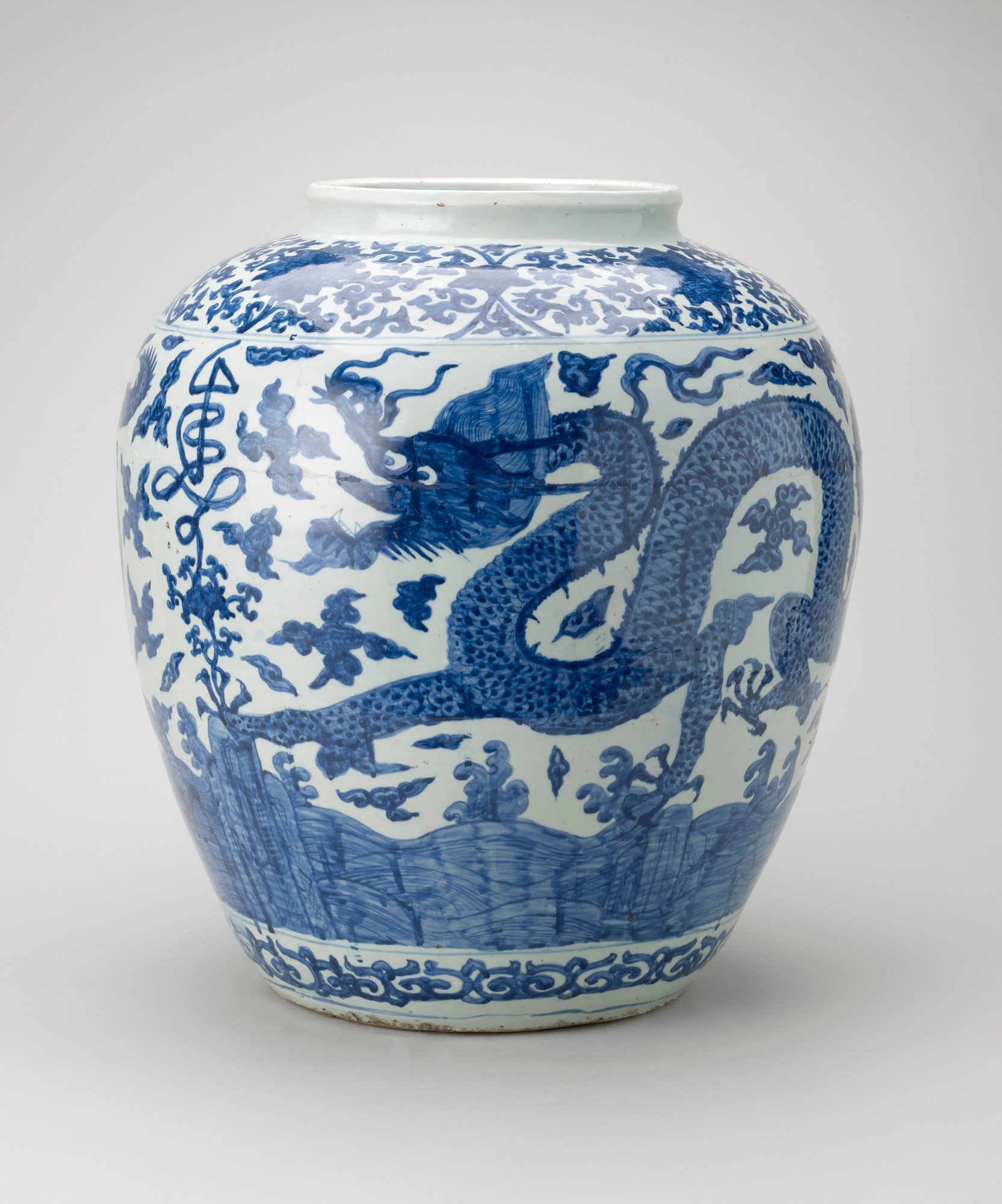
East Meets West
Extraordinary Chinese and Japanese Works of Art in the Royal Collection
Pair of jars and covers
1645-60RCIN 1192
On the base of each of these Chinese blue-and-white porcelain jars is the remains of a red wax seal stamped with the royal coat of arms of William III (1650–1702) and Mary II (1662–94). The seals are important evidence that the surviving porcelain collection at Hampton Court Palace belonged to Mary II. There, and at Kensington Palace, the queen amassed an important collection of porcelain in blue-and-white, white (blanc de Chine) and the colourful Japanese style. Having lived in Holland for 12 years prior to ruling in England, Mary brought with her the Dutch taste for Eastern wares, which she had previously satisfied through the Dutch East India Company's busy trading post in Amsterdam. The author Daniel Defoe wrote that she had 'a vast stock of fine China Ware, the like whereof was not then to be seen in England'.







